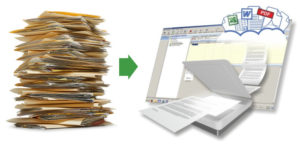 So, you have selected a cloud storage platform…great job! Now it’s time to get your documents into the cloud. Within your cloud storage platform, create a file JUST for medical records. If you want to protect your information, be sure to password protect this file (but be sure someone else knows your password to access this file in case of emergency)!
So, you have selected a cloud storage platform…great job! Now it’s time to get your documents into the cloud. Within your cloud storage platform, create a file JUST for medical records. If you want to protect your information, be sure to password protect this file (but be sure someone else knows your password to access this file in case of emergency)!
You need to get your medical information and records organized! If your provider has a patient portal, you should be able to access, download and save this information directly from the portal to your medical records folder in the cloud.
If you don’t have access to your records via a patient portal, ask for the following documents the next time you go for an appointment:
- A visit summary: You should receive this after every visit. If you don’t, ask for it. It will summarize the visit you had with your provider that day, as well as any tests that were ordered.
- A copy of your most recent lab results.
- A copy of your most recent radiology test reports (xrays, ct scans, pet scans).
- A list of your current medications.
- A history and physical report (also called an H and P): this summarizes your medical history as well as the physical exam.
- Any pathology reports related to your cancer diagnosis.
- A treatment summary including chemotherapy and radiation received (and doses if applicable).
Your medical records are YOURS and you are entitled to ask for copies of them. Some practices may charge you a nominal per page fee for printing or copying. If this is a hardship, explain that to the office staff and ask for assistance in gaining access to your records.
Now you have a stack of papers in front of you. In order to save these to the cloud, you need to digitize them. There are several ways to do this
- Take photos of each page and save the photo to your cloud drive. This can take a lot of time, depending on how many pages of records you have.
- Use a scanner to scan the documents into electronic files and save these electronic files to your cloud drive.
- Don’t have a scanner? Well, there’s an app for that too! I like Genius Scan. The basic version is free. There are many scanning apps available and some offer direct sharing to a cloud device (like Dropbox) for a price. Like taking photos, you will have to scan each page individually, but it saves these documents as PDFs rather than JPEG (photo) files. PDFs tend to be easier to open on a variety of different devices.
Yes, doing all this WILL take some time and some planning. But it is WORTH IT. Make it a family project and collect records for all of your family members, even your furry friends! This is a great way to have your information at your fingertips. This can be helpful if you are traveling, need emergency care away from your usual treatment site, or just want the information archived for potential future needs.